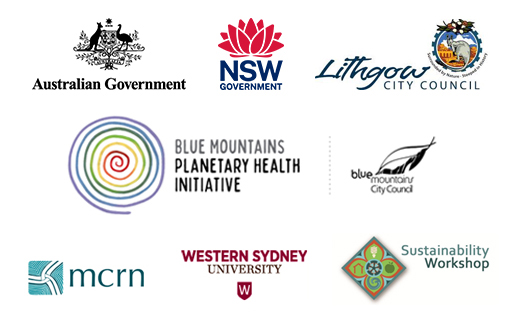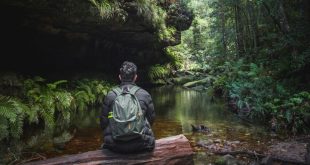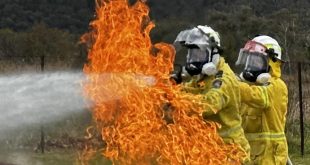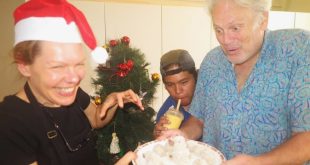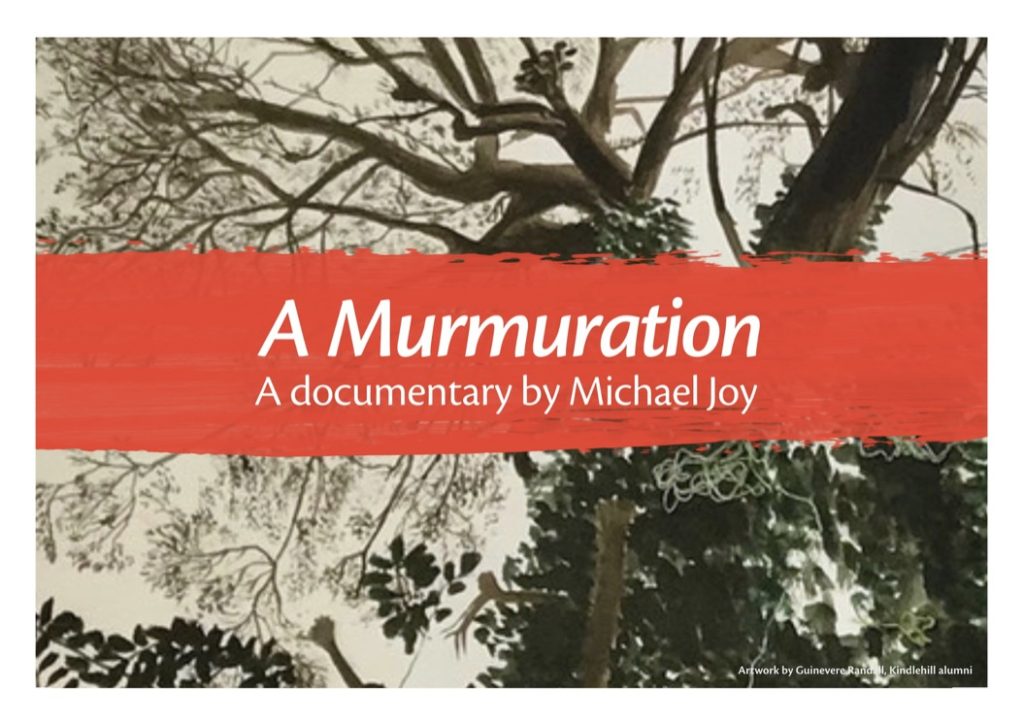
Poster for a Murmuration. Artwork by Guinevere Randall (supplied)
By Liz Durnan
Kindlehill School has launched its new senior school program with a thought-provoking documentary exploring ideas of home and healing that reflect Australia’s past and future.
It was an idea sparked by a production of Kate Grenville’s now classic novel, The Secret River. Bolstered by popular television and stage adaptations, the work has entered the public consciousness as a story that lays bare the searing truth of colonisation and the pain wrought on the First Peoples of Australia.
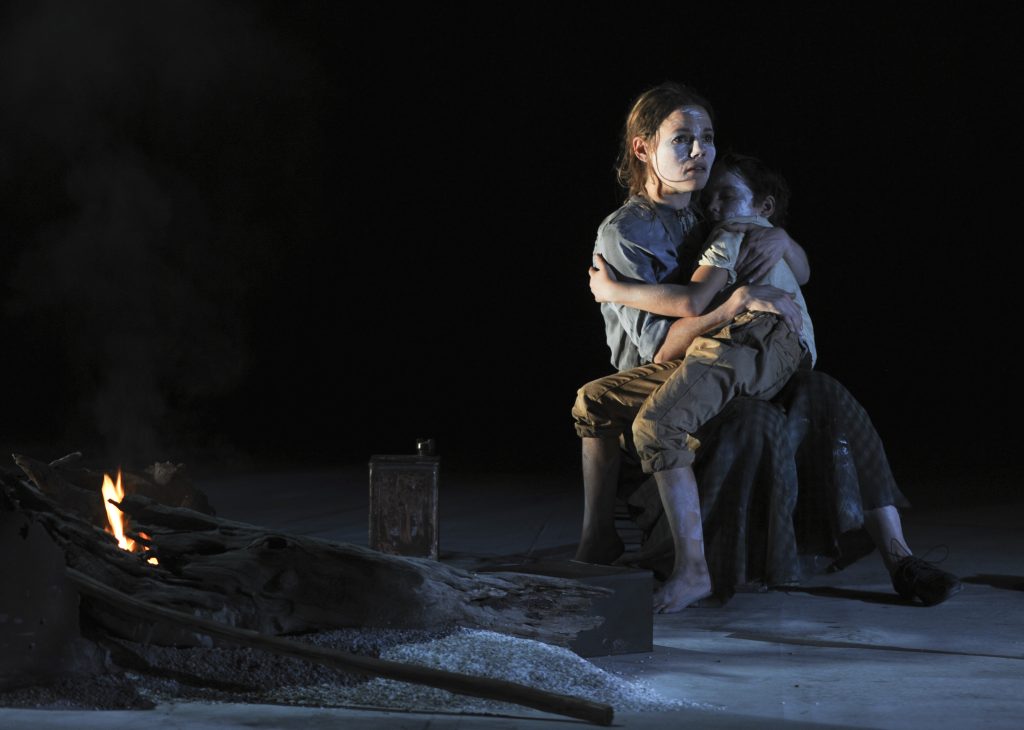
Georgia Adamson and Toby Challenor in STC’s The Secret River – return, 2016. (Heidrun Löhr ©)
At around the time that Kindlehill drama teacher Georgia Adamson had a major role in the Sydney Theatre Company production of The Secret River, she moved next door to Dharug Elder, Uncle Colin Locke. He confided in Georgia his pain following the trashing of his own home, after he had given another family a roof over their head.
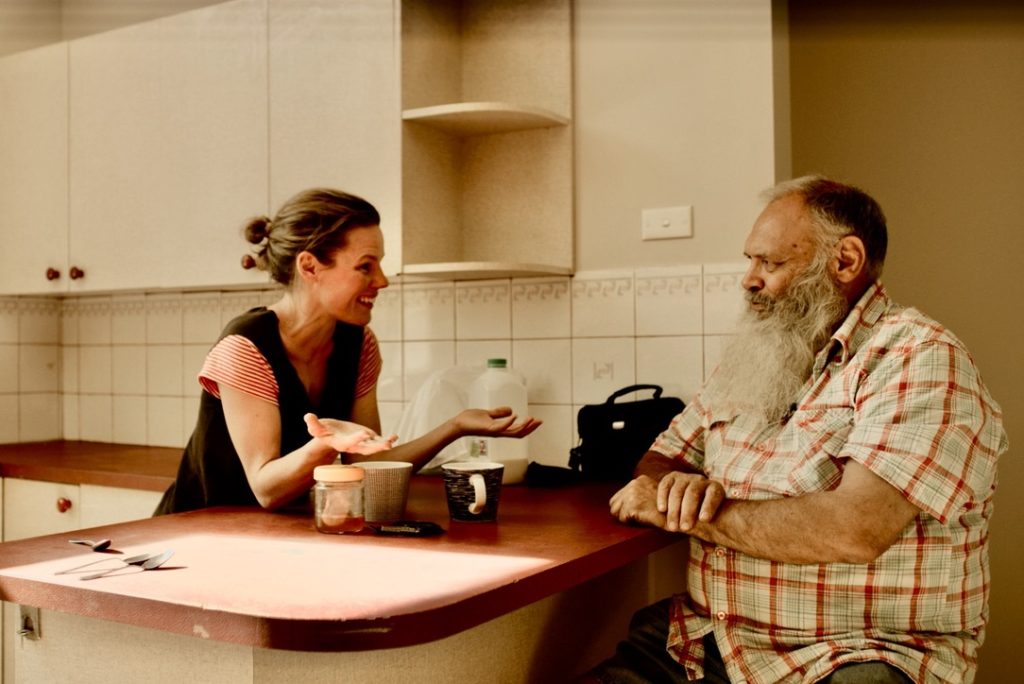
Georgia Adamson and Uncle Colin Locke ( still from the film ‘A Murmuration’)
Also at that time, Georgia and Kindlehill principal, Lynn Daniel, had been looking for a space outside of the school for the children to perform.
“I had been thinking, in terms of our drama program, how can we do something that’s not in the drama studio?” says Lynn. “How can we take something outside of that and into a community space of some kind? Our thoughts coincided around that.”
Georgia approached Uncle Colin to use his home for the drama students, in exchange for the children helping to clean it up. The seeds of A Murmuration were sown.
Despite attempts to restore the house, Uncle Colin knew his home needed healing on a deeper level. “He was very sad about that and quite down about it still,” Lynn says.
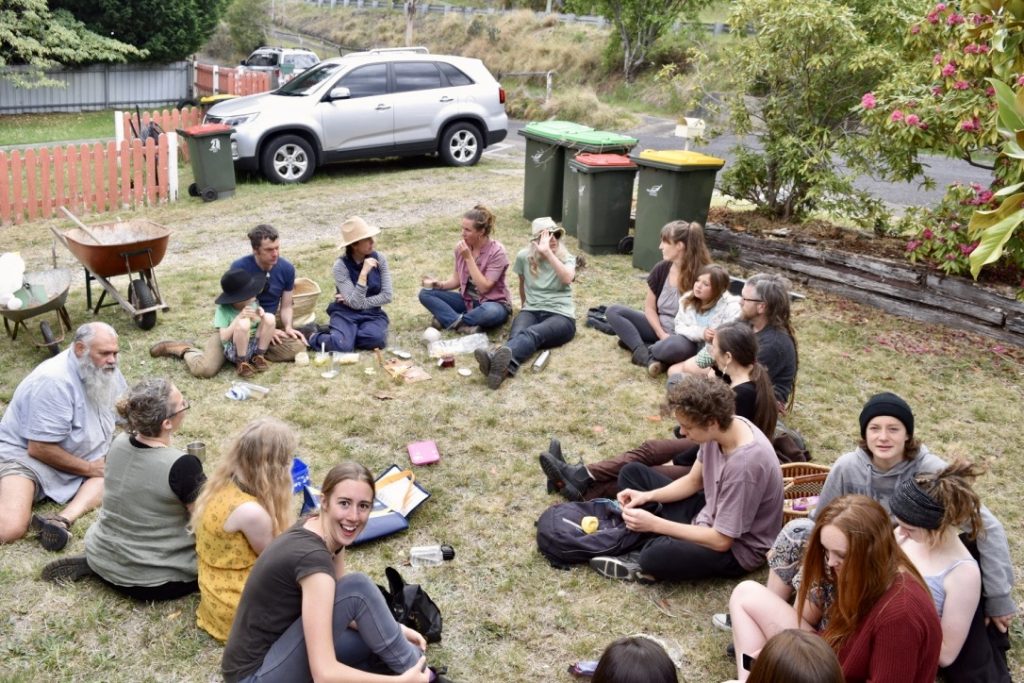
Kindlehill students with Uncle Colin Locke in his front yard (photo supplied)
Lynn, a history and geography teacher, recognised Uncle Colin’s story as a reflection of something bigger.
“Because Uncle Colin is a Dharug man and this is his Country, the kids got the trashing of his home on a symbolic level, that it was a microcosm of the trashing of a whole culture and people’s lives. Then, as permaculture teacher Rowe Morrow pointed out, we are also trashing the planet as well.”
Lynn Daniel
“So, there are all these layers to it that we were able to richly tap into.”
It was important for Uncle Colin that the home be ceremoniously cleansed, as well as literally cleaned by the children, for him to feel that the energy had shifted. So, he asked another Dharug Elder, Uncle Lex Dadd, to perform the smoking ceremony. This became a key aspect that connected the children and Uncle Colin in the healing of the home.
In what became the school’s Healing Home, Healing Space project, Lynn and Georgia explored how to use the creative experience as a way of truth telling and involving audiences. They came back with the idea of ‘How can you heal Country?’
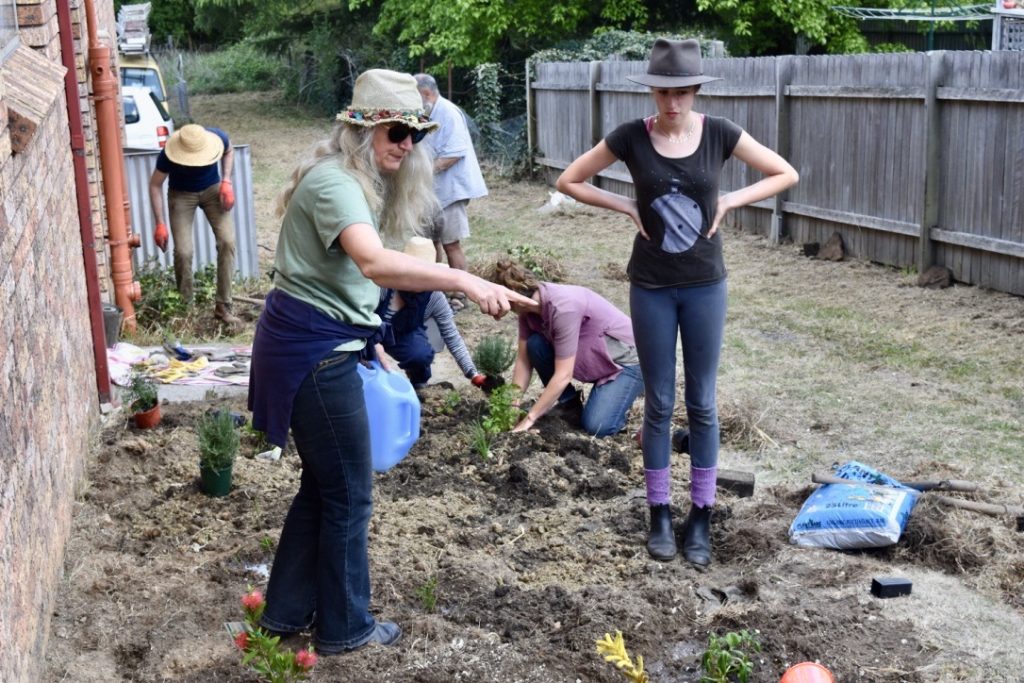
Lynn Daniel & Kindlehill students during the working bee at Uncle Colin’s (photo supplied)
For Kindlehill’s Year 9 students, the idea of a healing place was an abstraction, but drama teacher Georgia guided them by simply asking the question: “What does home mean for you?”
“Eventually, kids were telling stories about what it’s like to be involved in the foster care system or what it’s like for them in a home with tension and conflict.”
Georgia Adamson
According to Lynn, and depicted in the film, the kids were completely engaged with the project. They moved mattresses, planted the garden, washed windows, vacuumed, and cleaned cupboards at a series of working bees. This put the final touches on the cleaning up of Uncle Colin’s place.
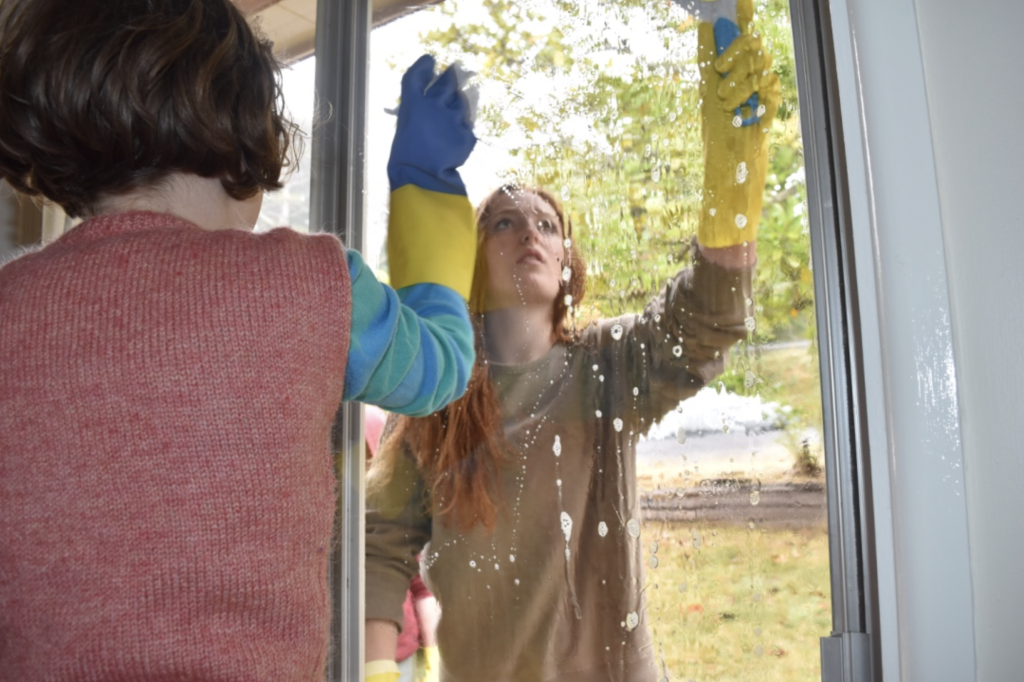
Students clean Uncle Colin’s home (photo supplied)
“It was just such a joyful experience,” Lynn says. There was no plan for a film or documentary when they embarked on the cleansing. While they had footage of the clean-up, there had been no intention of using it until Georgia’s friend and local filmmaker, Michael Joy, recognised something magical in it. He suggested taking more footage: “Because this is big,” he said. “This is such a moment, we should just capture it.”
So that’s what they did. With the documentary, came the idea of launching it to coincide with the school’s move into launching a senior school, offering Years 11 and 12 from 2024.
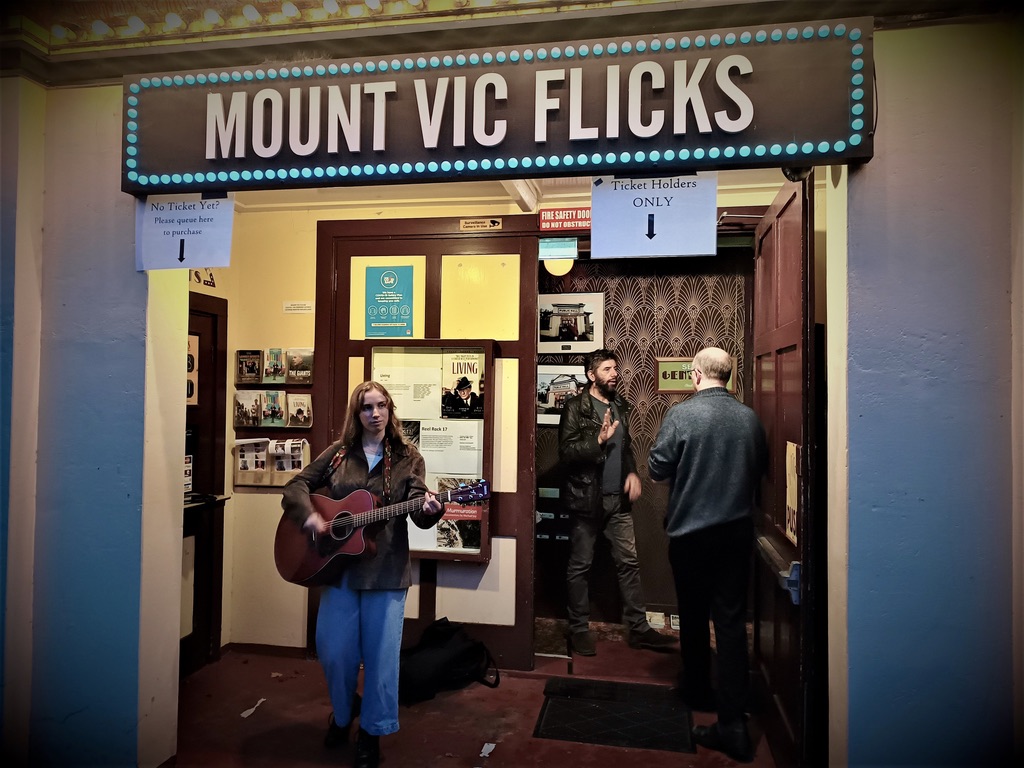
Kindlehill student Alina performing before the screening (photo supplied)
A Murmuration screened at Mt Vic Flicks in March to an audience of high school teachers (from Kindlehill and other schools), school children, parents and community members, including local permaculture teacher Rowe Morrow, and Uncle Lex, who appears in the documentary performing the smoking ceremony that cleanses Uncle Colin’s home.
The audience heard how the new senior school program will have a strong ecological focus and that students will be involved in finding solutions for real life challenges, like “how do you reduce the number of plastic milk bottles being used in the Blue Mountains?”, said Georgia.
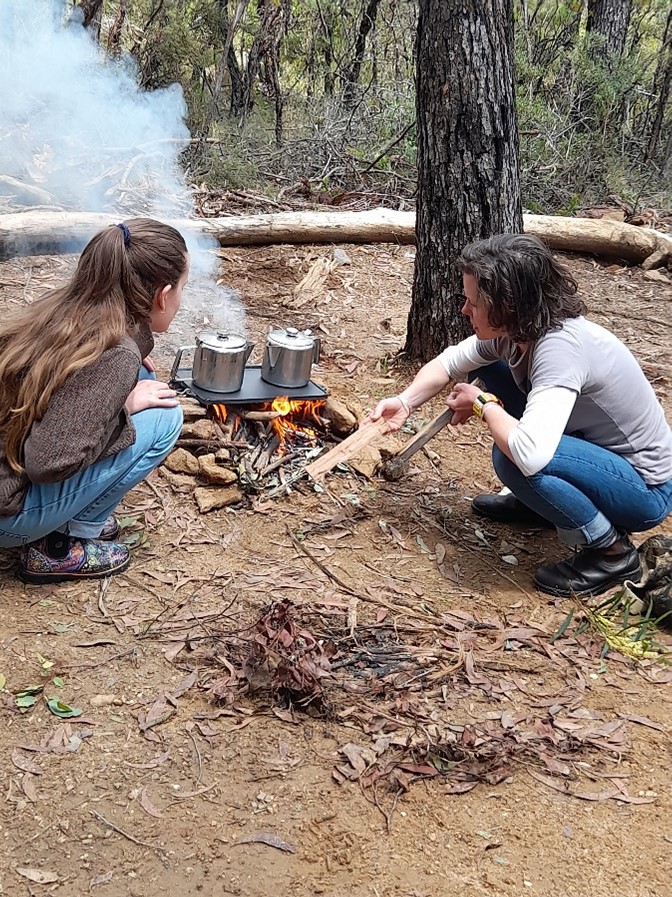
Georgia Adamson and student making a fire during year 10 Pilot Project – addressing single use plastic begins on Country (photo supplied)
When it comes to teaching young people about the environment, Lynn believes in arming them with the tools to find solutions: “You’ve got to give them the tools to address problems.”
The community launch of the program with this film screening, was strategically designed to inspire the wider community to connect with the school, and work with its senior students, to address key challenges to healing Country.
The new senior school program is named, with permission, for the Dharug phrase Buran Nalgarra – Strength and Learning Through Togetherness.
The idea was demonstrated on the night of the screening by Uncle Lex, with the making of stringybark twine. Many strands of bark, rubbed together by hand are twisted into a strong and hardy twine. The twine gets stronger as more strands are brought together – perfectly capturing the intention of the school in promoting ‘belonging’ among its students.
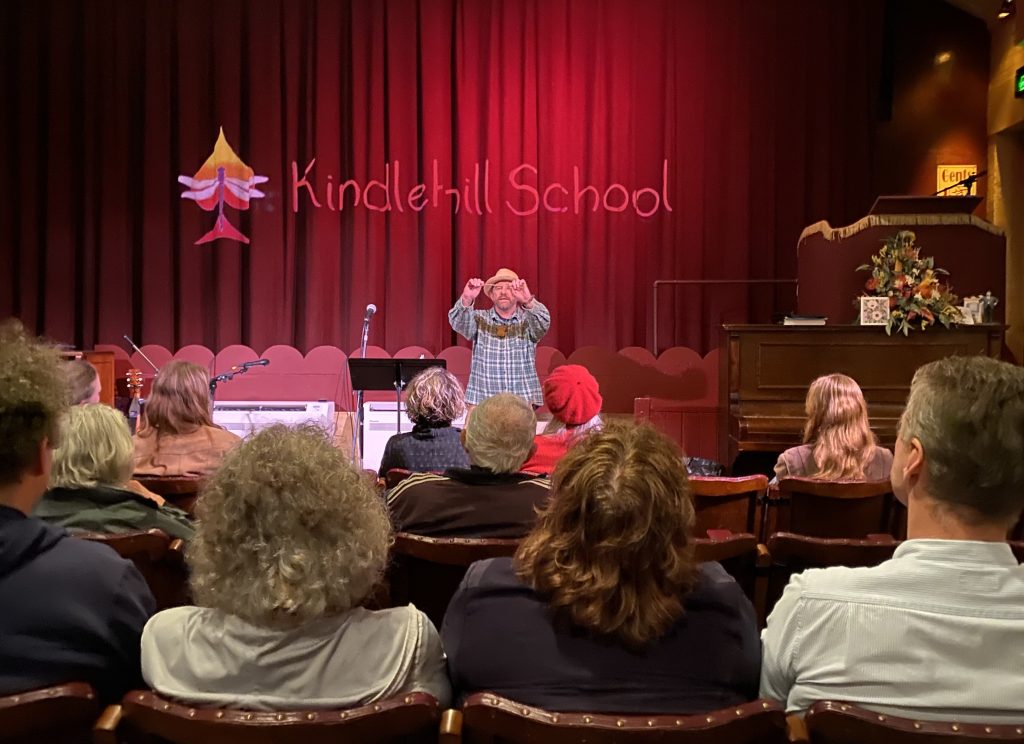
Uncle Lex Dadd Welcome at Mount Vic Flicks (Lis Bastian)
“There’s a responsibility that comes with belonging as well,” Lynn says. “And so there are all kinds of things that we’re interested in doing, and they’re not traditionally part of what education does, but they are meaningful. They are things that kids get, and get excited about.”
“But the obligation that comes with belonging is that you care for Country. And that’s one of the tools that you’re equipping them with because you’re helping them learn: how do I fill my cup? Nature is healing but we also need to be part of nature’s health and wellbeing as well. It’s not a one-way street, it’s reciprocal.”
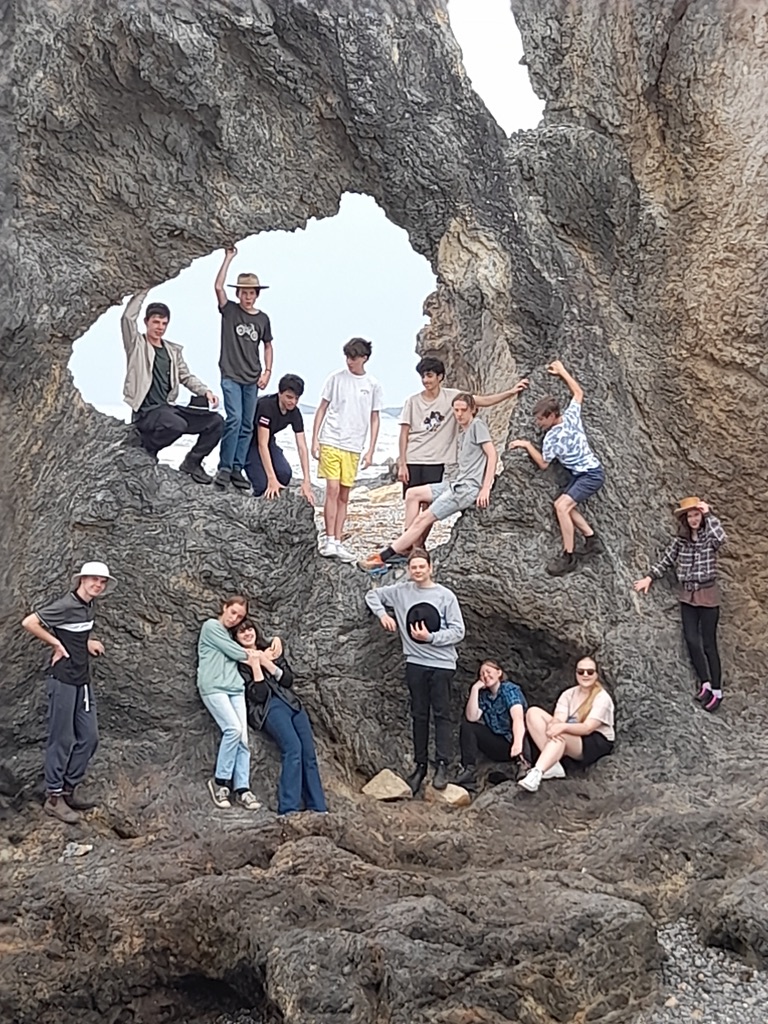
Year 9-10 students during a Geography on the Road camp, stopping at Narooma (photo supplied)
By spending a great deal of time outdoors at Kindlehill, on camps and in the bush, the learning – about nature, about mountains, about water – becomes richer and more meaningful. “It makes so much more sense to kids than when you’re just learning it in the classroom,” Lynn says.
This story has been produced as part of a Bioregional Collaboration for Planetary Health and is supported by the Disaster Risk Reduction Fund (DRRF). The DRRF is jointly funded by the Australian and New South Wales governments.
